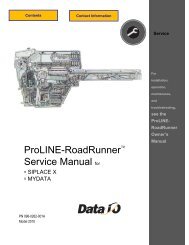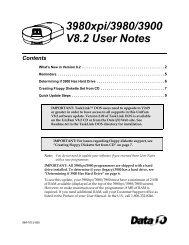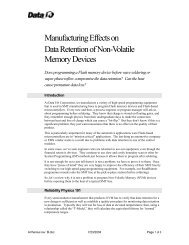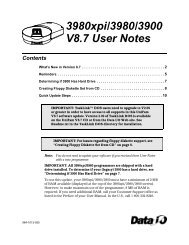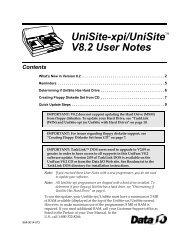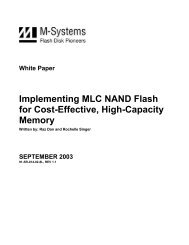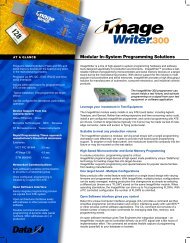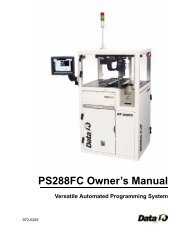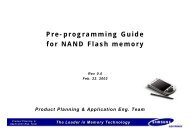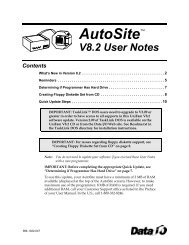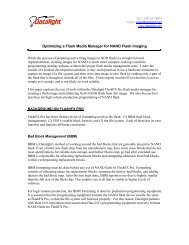3980xpi Users Manual - Data I/O Corporation
3980xpi Users Manual - Data I/O Corporation
3980xpi Users Manual - Data I/O Corporation
You also want an ePaper? Increase the reach of your titles
YUMPU automatically turns print PDFs into web optimized ePapers that Google loves.
Commands<br />
* Program Security Fuse (Y,N)<br />
Enables or disables the programming of the security fuse(s). To program<br />
the security fuse(s), set this parameter to Y and set the Security Fuse <strong>Data</strong><br />
parameter(s) to 1. This parameter defaults to N, which disables<br />
programming of the security fuse(s).<br />
* Program Signature<br />
Available on only a few devices, the program signature is a user-definable<br />
field that allows the user to program data into the program signature array.<br />
* Software <strong>Data</strong> Protection (Y,N)<br />
When enabled, prevents writing to a device.<br />
Optional Parameters<br />
The Non-default Parameters screen, which contains the preceding<br />
parameters and any default parameters that were changed, is displayed as the<br />
default. The more complex All Parameters screen displays the following<br />
additional parameters. To toggle between the two screens, press F4.<br />
� Memory Begin Address<br />
Specifies the beginning RAM address, in hex, of the first byte of data to be<br />
programmed. The Memory Begin Address must be an even address if you<br />
have selected a 16-bit device. The default address is 0.<br />
� Device Begin Address<br />
Specifies the first hex device address to be programmed. The default is 0.<br />
� Device Block Size<br />
Specifies the size in hex of device data used in device operations. At device<br />
selection, Device Block Size is automatically set to the device size and<br />
usually does not need to be changed. It is also set to a smaller value if the<br />
Device Begin Address is not zero. You can change this parameter. Entering<br />
zero sets the Device Block Size equal to the device size.<br />
� Set Auto-increment<br />
When enabled, directs the programmer (in serial set programming mode)<br />
to the starting memory address of the next block in the set to be<br />
programmed.<br />
For example, if you have four 1K x 8 devices to program from a 4K x 8<br />
block of data, using the auto-increment option directs the programmer to<br />
point to the first address of the next 1K block after each device has been<br />
programmed. For single device operations, this feature should be disabled<br />
and the Next Device parameter should be set to 1.<br />
Note: Items with an * (asterisk) are visible on the screen only if the<br />
selected device supports the feature.<br />
* Illegal Bit Check (Y,N)<br />
Enables or disables the illegal-bit test. This test compares data in a device<br />
against data in the programmer's RAM to determine if the device has<br />
already-programmed locations of incorrect polarity.<br />
For example, the programmer returns an illegal-bit error in the following<br />
situation: data in RAM indicates a specific bit should be in an<br />
unprogrammed state while the corresponding bit in the device is in a<br />
programmed state. The device cannot be programmed if the programmer<br />
detects an illegal bit. This parameter is enabled by default.<br />
<strong>3980xpi</strong>/3980/3900/2900 User <strong>Manual</strong> 4-13




